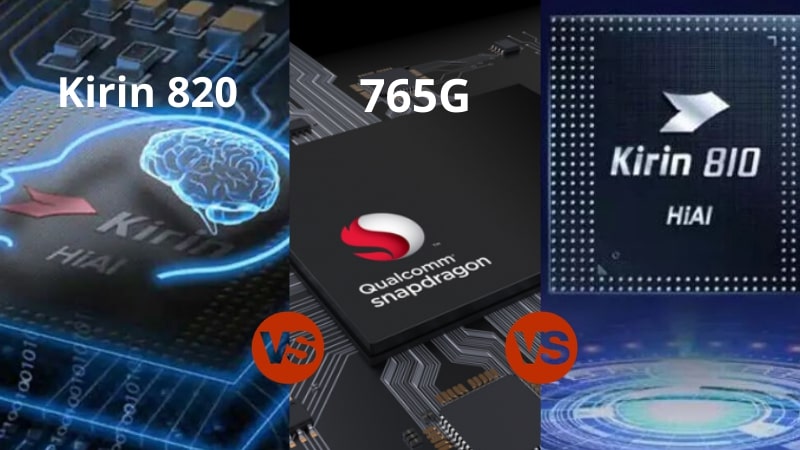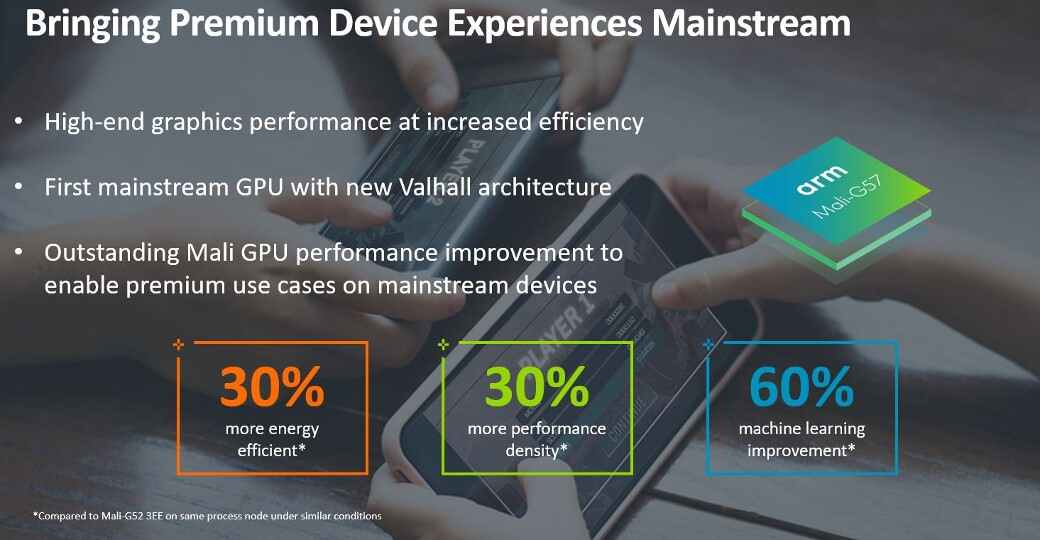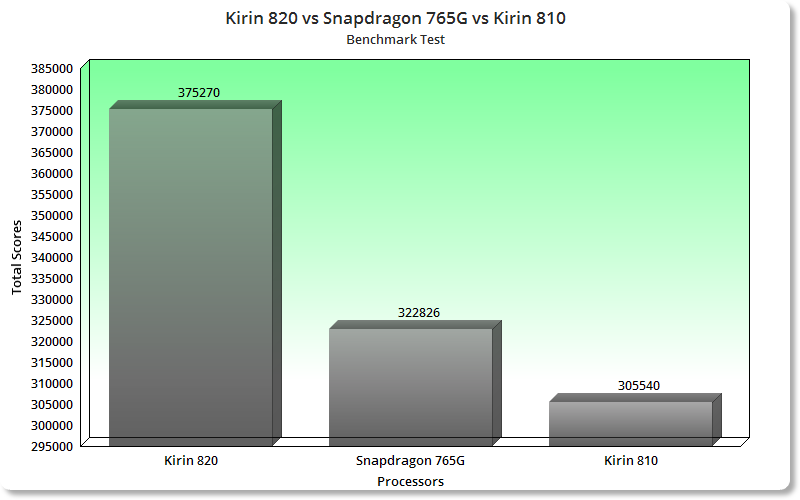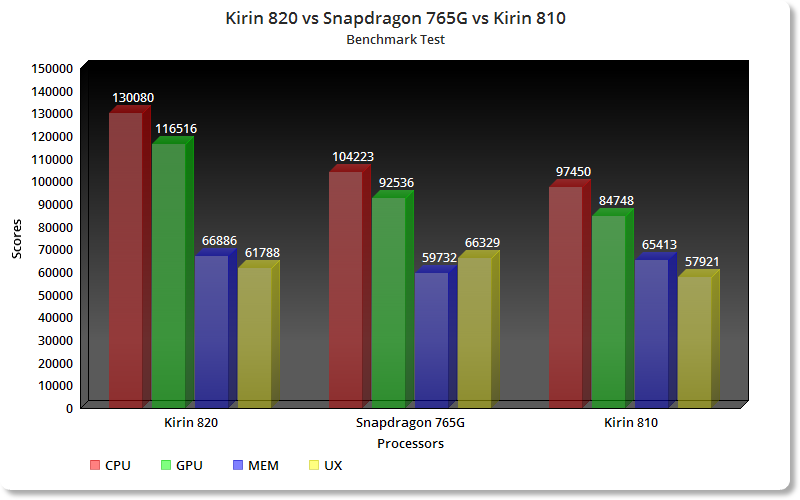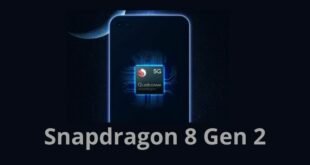Huawei has released an all-new upper mid-range specific processor called Kirin 820 5G. This comes in as a successor to last year’s Kirin 810. As per some benchmark numbers, the Kirin 820 overpowers not only the 810 but also the much more premium Kirin 980 found on the Huawei P30 Pro. The numbers put it right beside Qualcomm’s last year flagship processor, the Qualcomm Snapdragon 855. So here in this article, we will see what the new processor looks like against the odds of its predecessor, Kirin 810, and Qualcomm counterpart Snapdragon 765G.
Kirin 820 5G vs Snapdragon 765G vs Kirin 810 Comparison
Manufacturing Process:
All three of the processors are built on a 7nm manufacturing process. However, the Snapdragon 765G is built on Samsung’s EUV manufacturing process, while the Kirin siblings are built on TSMC’s 7nm manufacturing process. So, efficiency-wise, they should all be almost equally power-efficient.
CPU:
The Qualcomm Snapdragon has a tri-cluster design with two high-performance and six power-efficient cores. The two performance cores include the newer Kryo Prime Cortex A76, running at a speed of 2.4GHz, and the older Cortex-A76-based Kryo Gold core, running at a speed of 2.2GHz. In the case of the six energy-efficient cores, we get Cortex-A55 cores clocked at 1.8 GHz.
In comparison, the Kirin 810 is an octa-core processor and comes with four high-performance Cortex-A76 cores clocked at 2.27 GHz and four power-efficient Cortex-A55 cores clocked at 1.88 GHz.
The newer Kirin 820 5G is also an octa-core processor with a 1+3+4 configuration. It features a prime high-performance Cortex-A76 core clocked at 2.36 GHz, three identical A76 core clocked at 2.22 GHz, and four power-efficient Cortex-A55 cores clocked at 1.84 GHz. It boasts of up to 27% improved performance over the predecessor 810.
GPU:
When it comes to GPU, Huawei always had a lead on Qualcomm, and the same has been maintained this time around, too. The Snapdragon 765G comes with Adreno 620, which is a huge improvement over its predecessor 618, but it was still behind Kirin 810’s GPU Mali-G52 MP6 when it was launched. The Mali-G52 MP6 is based on a 16nm process and comes with 850MHz frequency.
The newer Kirin 820 beats both of them with its Mali-G57 GPU and supports GPU Turbo and Kirin Gaming+ 2.0. It offers 38% better GPU performance than the Kirin 810’s Mali-G52 GPU. According to Antutu’s GPU test, the numbers suggest that the Kirin 820 5G beats the Snapdragon 765G Kirin 810 and also goes ahead of the Kirin 980.
Benchmark Score:
In the Antutu benchmark test, the Honor 30S-powered Kirin 820 leads the battle with 375270 points, followed by the Redmi K30 5G-powered Snapdragon 765G with 322826 points and the Huawei Nova 6 SE-powered Kirin 810 with 305540 points.
The CPU scores of Kirin 820, Snapdragon 765G, and Kirin 810 in the Antutu test are 130080 points, 104223 points, and 97450 points, respectively. In terms of the GPU score of Antutu, the Kirin 820 scores 116516 points, the Kirin 810 scores 84748 points, and the Snapdragon 765G scores 92536 points.
Which One is the Better Processor?
Both in terms of GPU and CPU, the Kirin 820 is a generation ahead of its rivals and even better than some premium offerings. Also, if we look into AnTuTu’s scores, the Kirin 820 processor has approx 23% and 16% advantage in overall performance compared to the Kirin 810 and Snapdragon 765G processors, respectively. When the Kirin 820 makes a debut on the market officially, it will surely raise the bar for its competitors.
